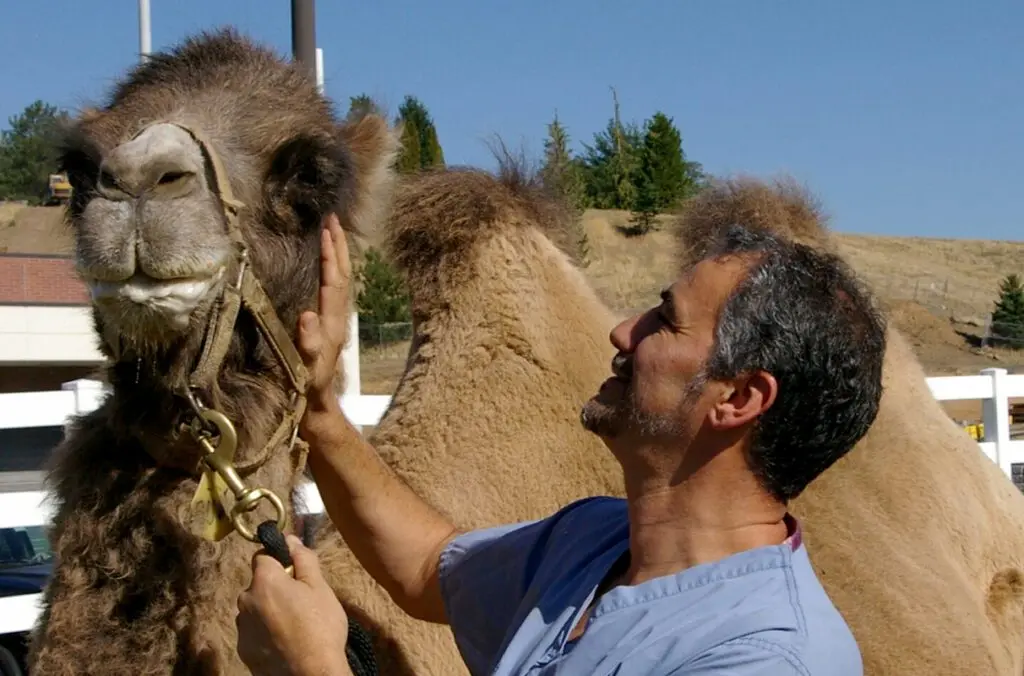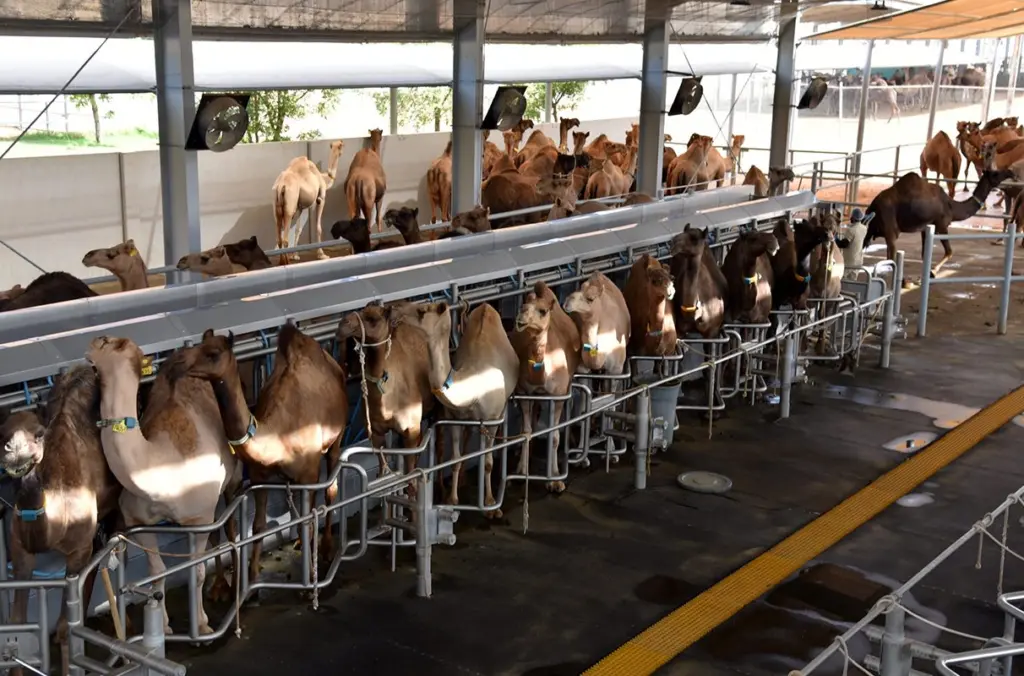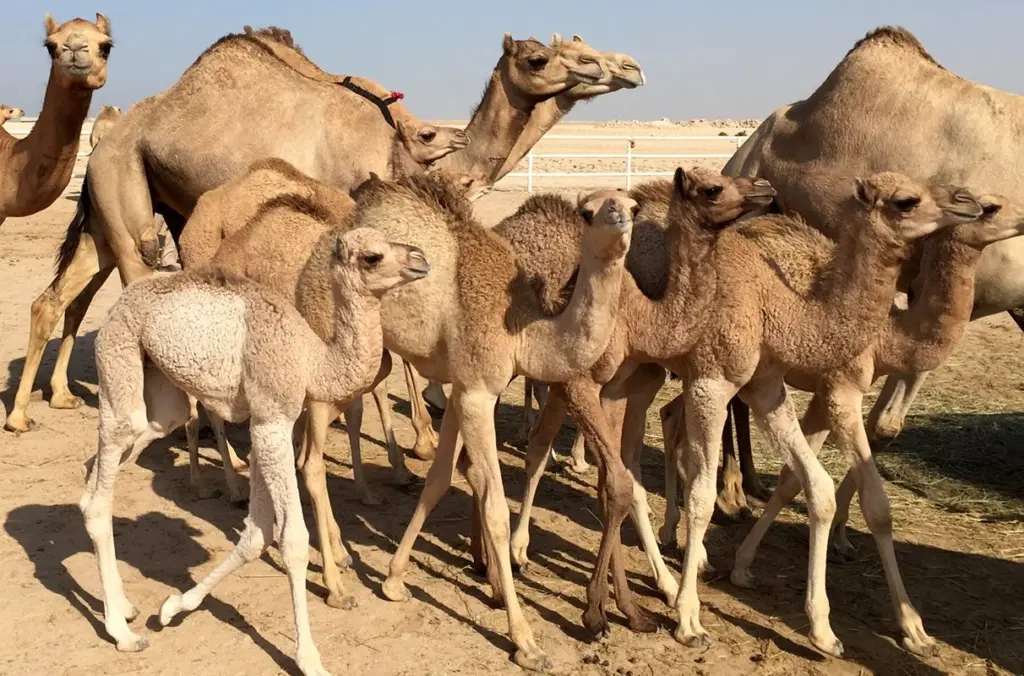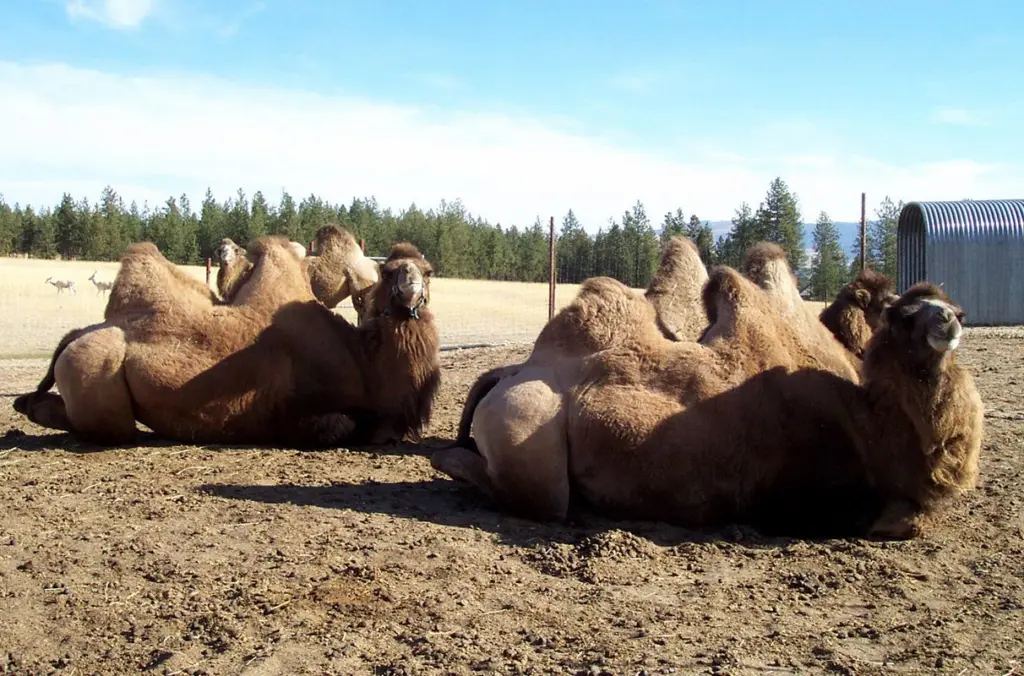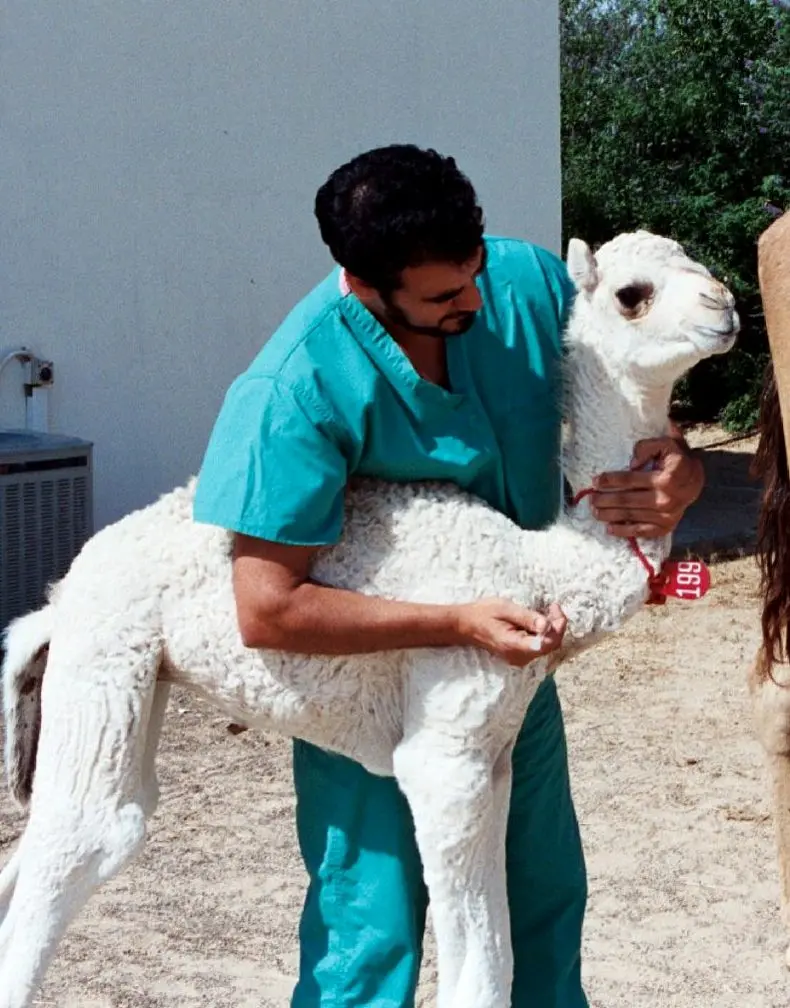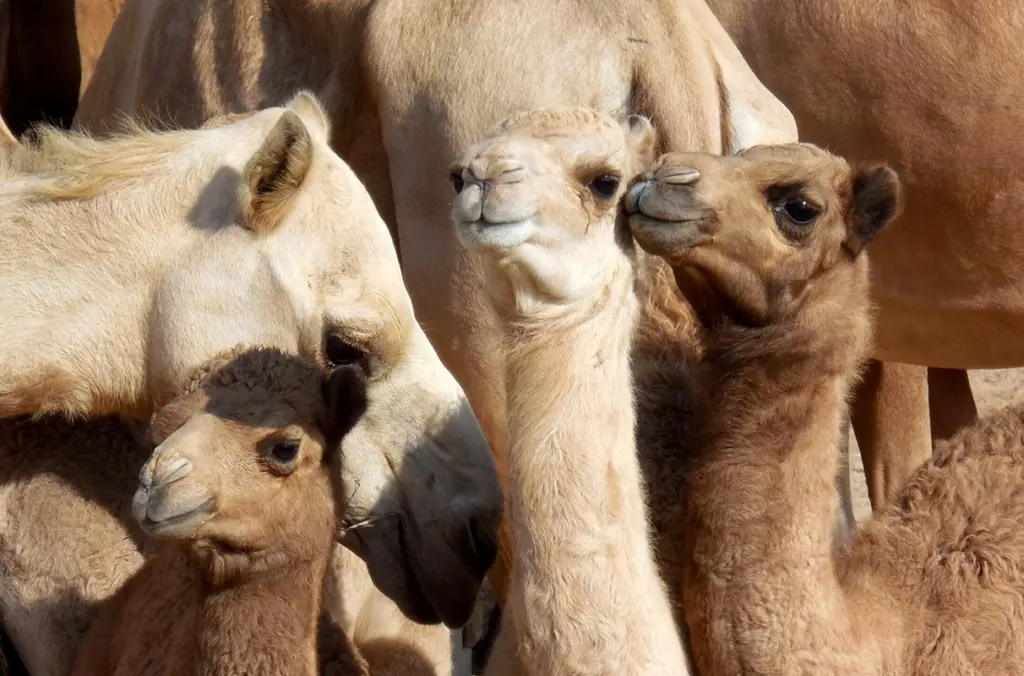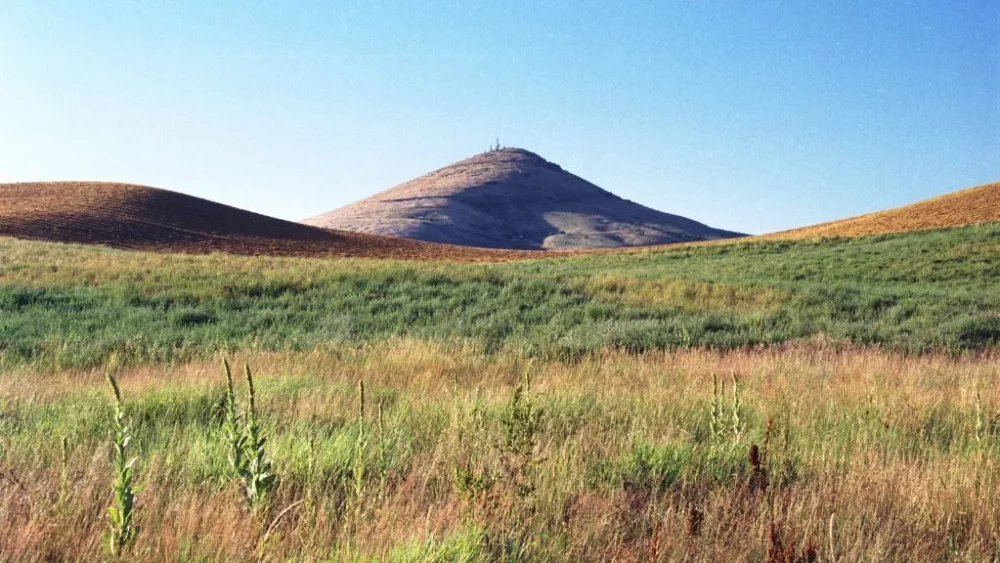PULLMAN, WA – Dr. Ahmed Tibary never planned to study camels and their close relatives, the camelids, a group that includes alpacas and llamas.
In 1992, he was a young veterinarian trained in reproductive medicine, focused on horses. That year, while working in Abu Dhabi, he was asked to apply his knowledge of equine reproduction to another set of animals that, at the time, he knew little about: racing camels.
“I never thought I’d be working with camels,” said Tibary, professor emeritus in the Washington State University College of Veterinary Medicine. “But the person I was working for wanted me to do on camels what I was already doing with horses. That’s how it all started. And to this day, camels still fascinate me because they borrow from so many other species.”
That sense of curiosity carried Tibary through more than three decades of research on camelids. From Abu Dhabi to WSU, he became one of the world’s foremost experts in camelid reproduction, infertility, and embryo transfer.
Tibary’s latest contributions to the field recently appeared as two studies in the journal CABI Agriculture and Bioscience. In June, he and his longtime colleague, Dr. Abdelhaq Anouassi of the Advanced Scientific Group in Abu Dhabi, published new research aimed at improving assisted reproduction techniques in camels — part of their ongoing efforts to make these technologies more practical and effective for breeders. The study found that a specially designed vaginal condom was much more effective and practical than traditional methods of collecting semen from dromedary camels.
…to this day, camels still fascinate me because they borrow from so many other species.
Dr. Ahmed Tibary, professor emeritus
Washington State University
In May, Tibary and colleagues from Texas A&M published a sweeping review of camelid cytogenetics. Cytogenetics is the study of chromosomes and their role in fertility and disease. The paper compiles decades of findings on camelids and lays out a plea to veterinarians and breeders worldwide: collect and submit more samples so the chromosomal mysteries of these animals can finally be unraveled.
“This is the foundation of understanding infertility in camels,” Tibary said. “Chromosomal abnormalities can have huge impacts, and yet, we know so little.”
Tibary’s fascination with camels blossomed during his seven years working in Abu Dhabi. With plenty of funding and abundant animals to study, he and Anouassi explored both the practical and fundamental questions of camel reproduction. They investigated infertility, pioneered techniques like artificial insemination and embryo transfer, and compared the reproductive biology of camels to other mammals.
While camels are often celebrated for racing and transportation, they are also crucial production animals: according to the Food and Agriculture Organization, more than 200 million people rely on them for milk, meat, and fiber, with global camel milk production exceeding 3 million tons annually. Understanding their unique reproductive biology, Tibary realized, could help improve the lives of people who depend on them.
“When you compare species you start to see how nature solved similar problems in different ways,” he said. “Camels borrow bits and pieces from so many mammals. It’s as if they were designed by committee.”
Tibary was hired by WSU to focus on dairy cattle, but he progressively built a service and research program in comparative theriogenology, the veterinary specialty devoted to reproductive medicine and surgery. At WSU, his clinical practice spanned horses, cattle, sheep, goats, and camelids — and he became the rare veterinarian who has worked with every species of camelid in the world, from South America’s diminutive vicuñas to the endangered wild Bactrian camel of Central Asia.
Much of his work at WSU focused on understanding and diagnosing infertility as well as applying technologies such as artificial insemination and embryo transfer. His team of graduate students developed protocols for identifying different reproductive disorders, performed surgeries, and trained veterinary students and practitioners to tackle camelid cases other clinics were reluctant to see.
“Many vets are afraid of the unknown,” he said. “When I started seeing alpacas near the Palouse, they were considered odd and exotic, and no one wanted to deal with them. But when you lean into that discomfort, you discover a lot.”
For Tibary, working with camelids also taught lessons beyond science. Camelids, he said, are highly sensitive to how they’re approached. He remembered the first time he tried to photograph one in the field: the camel turned, fixed him with a disdainful glare, and spat at him.
“They don’t like being surprised,” he said. “If you don’t respect their space, they let you know.”
That kind of wariness extends to people, too. Many veterinarians and breeders shy away from camelids simply because they’re unfamiliar. “But that reaction,” Tibary said, “is dangerous. It closes you off to learning.”
He came to see camelids as a metaphor for embracing the unknown. “They can be dangerous, they can be fun — but if you pay attention, if you really understand their differences, they become fascinating.”
In 2013, Tibary was tapped by one of his Middle Eastern connections to help design a state-of-the-art camel hospital in Qatar. He and a team of WSU collaborators spent one year consulting on its creation and training veterinarians in the region.
After more than 30 years working on camelids, Tibary and his longtime colleague Anouaasi recently summarized much of their work in a book on camelid theriogenology, now in its second edition — a testament to decades of clinical cases, research papers, and hard-won experience.
“I’m proud of it,” he said. “Every case I’ve seen is illustrated. It’s my way of saying: here’s what we’ve learned.”
At heart, Tibary remains captivated by camelids — their biology, their behavior, and their history. Throughout his career he enjoyed the looks on his students’ faces when he told them that camelids originated in North America millions of years ago before migrating to Asia and South America, where they evolved into the species we know today.
“It’s amazing,” he said. “They’re one of nature’s most adaptable animals — and they still have so much to teach us.”


